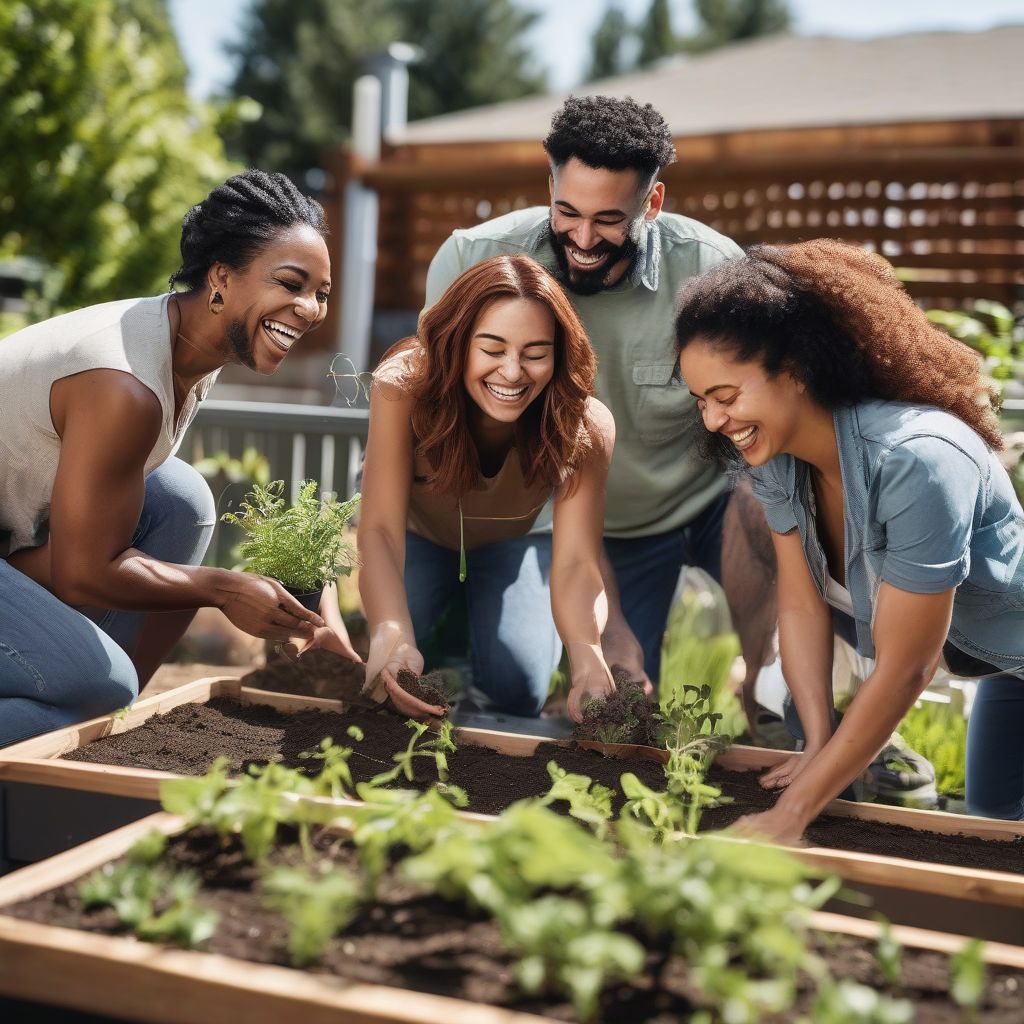Have you ever dreamt of biting into a juicy tomato still warm from the sun, knowing you played a part in growing it? Or wished for a way to connect with your community while enjoying the physical and mental benefits of gardening? Local community gardens offer all this and more, and jumping in is easier than you might think. Let’s explore the world of community gardening and how you can become an active participant.
Unearthing the Benefits of Community Gardening
Community gardens are more than just plots of land – they’re vibrant hubs that nourish both body and soul. Here’s why people are flocking to these green spaces:
- Fresh, Affordable Produce: Enjoy the fruits (and vegetables!) of your labor! Community gardens provide access to fresh, healthy food, often at a fraction of grocery store prices.
- Social Connection: Forge friendships and strengthen community bonds while digging in the dirt alongside your neighbors.
- Outdoor Exercise: Gardening is a fantastic way to get some sunshine and gentle physical activity, boosting both physical and mental well-being.
- Environmental Stewardship: Contribute to a greener environment by growing food sustainably, reducing your carbon footprint, and supporting local ecosystems.
- Learning Opportunities: Gain valuable gardening skills, learn about different plants and growing techniques, and share knowledge with fellow gardeners.
Finding Your Local Garden Oasis
Ready to get your hands dirty? Here’s how to find community gardens in your area:
- Online Directories: Websites like the American Community Gardening Association (ACGA) and the USDA People’s Garden Initiative offer searchable databases of community gardens nationwide.
- Local Government Resources: Check your city or town website, contact your parks and recreation department, or visit your local library for information on community gardens.
- Community Bulletin Boards: Scan bulletin boards at coffee shops, libraries, community centers, and places of worship for flyers or announcements.
- Social Media: Search social media platforms like Facebook and Instagram for local gardening groups or community garden pages.
 Community Garden Planting
Community Garden Planting
From Seed to Harvest: Getting Involved
Once you’ve found a community garden that piques your interest, it’s time to dive in! Here are the most common ways to get involved:
1. Become a Member
Many community gardens operate on a membership basis. This typically involves a small annual fee that helps cover the costs of water, seeds, tools, and garden maintenance.
Expert Tip: “Joining as a member not only gives you a plot to garden but often grants access to workshops, shared resources, and a supportive network of fellow gardeners,” says Maria Hernandez, a seasoned community gardener and garden educator.
2. Volunteer Your Time
Don’t have the time or space for your own plot? No problem! Most community gardens welcome volunteers for a variety of tasks:
- Planting and Harvesting: Assist with planting seeds, transplanting seedlings, weeding, watering, and harvesting produce.
- Garden Maintenance: Help with tasks like building raised beds, spreading mulch, composting, and repairing tools.
- Community Outreach: Spread the word about the garden by distributing flyers, managing social media accounts, or organizing events.
- Fundraising: Help secure funding for the garden by organizing bake sales, plant swaps, or grant writing.
3. Offer Your Unique Skills
Community gardens thrive on the diverse talents of their members. Share your expertise to make a difference:
- Experienced Gardener? Mentor new gardeners, lead workshops on specific gardening techniques, or assist with garden planning.
- Construction or Carpentry Skills? Help build raised beds, trellises, or tool sheds.
- Artistic Flair? Design and paint signs, create a welcoming entrance, or decorate the garden for special events.
- Tech-Savvy? Create a website or social media presence for the garden, manage online communication, or set up an online volunteer signup system.
Reaping the Rewards of Community
Getting involved in a local community garden is an investment that yields bountiful rewards:
- Improved Health and Well-being: Studies show that gardening can reduce stress, improve mood, and increase physical activity.
- Stronger Community Ties: Community gardens foster a sense of belonging, encourage collaboration, and bridge cultural divides.
- Increased Access to Fresh Food: For many, community gardens provide a vital source of fresh, affordable produce, promoting healthier eating habits.
- Environmental Sustainability: Community gardens promote sustainable gardening practices, reduce food miles, and create green spaces in urban environments.
Nurturing Your Community Garden Experience
Ready to embark on your community gardening adventure? Here are a few tips for a fulfilling experience:
- Start Small: If you’re new to gardening, begin with a smaller plot or volunteer for a few hours to get a feel for it.
- Don’t Be Afraid to Ask for Help: Seasoned gardeners are usually happy to share their knowledge and expertise.
- Be Respectful: Community gardens are shared spaces, so be mindful of others and their gardening practices.
- Have Fun! Gardening should be an enjoyable and rewarding experience.
[amazon bestseller=”gardening tools”]
Sowing the Seeds of Change: Conclusion
Participating in a local community garden is a rewarding way to connect with nature, nourish your body and mind, and build a stronger community. Whether you have a green thumb or are a complete beginner, there’s a place for you in the world of community gardening. So, grab your gardening gloves, find your local garden, and experience the joy of growing together!
